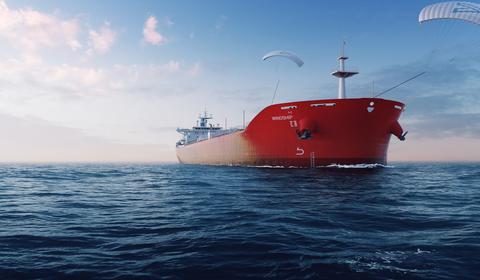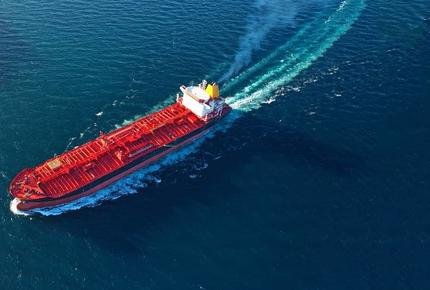
Wind-assisted propulsion as a key factor in the shipping industry’s journey to net zero
The global maritime transportation sector is being urged to act to reach net zero by 2050. As many maritime transportation routes are often subject to strong winds, some shipowners are starting to integrate modern sails onboard their vessels to harvest this energy.
Installing a wind assistance ship propulsion system onboard a vessel allows to reduce carbon dioxide (CO2), nitrogen oxide (NOx) and sulfur oxide (SOx) emissions. It also has the benefit of reducing harmful underwater radiated noise (URN).
The benefits of these installations can be pertinent to both new builds and in-service ships. However, questions of risk, safety, operational ease and performance remain as wind assisted propulsion technology matures.
Modern sails take hold
Wind-assisted propulsion technologies are flourishing as low-carbon emission solutions. They come in various forms, can be used by many types of vessel. The first prototypes of rotor, suction and rigid sails are already installed and at sea. Meanwhile, further developments are being made on these systems and others such as kites and wing sails with separate or articulated profiles. Some of these are now reaching the finals stages of development. Vessels as diverse as cargo ships, bulk carriers, passenger ships, and LNG tankers can use wind-assisted propulsion systems to lower their emissions. While some ships are unsuited to sails due to their operational profiles – e.g., supply ships, dredgers, tugboats – ocean-going vessels can benefit from strong performance boosts.
The extent of these boosts depends on several factors, including the vessel’s speed, the routes ships travel and the weather they encounter. For example, a vessel moving at over 15 knots is more likely to encounter wind forces coming towards her, which would impair the efficiency of a wind-assisted propulsion system. Equally, it may be helpful to adjust a vessel’s route to encounter more favorable conditions and thus optimize the percentage of propulsion from sails.
While some industry experts claim that wind-assisted propulsion could reduce traditional fuel consumption by up to 50%, a more likely figure is 15-20%. A higher gain may be expected on new-built ships where the whole vessel is optimized to better integrate the wind propulsion assistance system. This makes modern sails a good option for shipowners looking to quickly reduce vessel emissions, but also excludes sails as a standalone decarbonization solution. Wind-assisted propulsion will need to be used alongside alternative fuels such as biofuels, methane, ammonia, hydrogen or other energy saving devices (ESDs) to produce zero-emissions vessels.
Challenges for wind-assisted propulsion
When shipowners consider implementing wind-assisted propulsion onboard, they must account for certain technical and safety concerns.
-
Maintaining visibility
Due to their size, sails can affect the onboard visibility of passengers and crew members. This should be accounted for during the initial study to determine if wind-assisted propulsion is an appropriate solution.
-
Matching systems
When retrofitting, sails must be viewed as a complementary technology to be integrated alongside existing systems. Onboard fixtures, such as cranes or tanks, must not be disrupted by the addition of sails.
-
Avoiding drift
Ships using sails need to avoid drift caused by transverse forces, which can distort structural vessel elements. Naval engineers must confirm that their chosen rudders can maintain the ship’s equilibrium before integrating sails onboard.
-
Crew workload
While future vessels may operate autonomously, today they must be managed and maintained by skilled crew members. This means that crew may require supplementary training to handle new wind-assisted propulsion technology. Additional crew members may even need to be hired to cover the work involved in operating the sails.
-
Managing navigation
With sails reaching heights of over 60 meters, certain ships may no longer be able to pass under bridges and might need operational adaptations or advanced technical modification of the sail system itself.
-
Analyzing weather statistics
Naturally, all wind-assisted propulsion systems require wind. Before choosing to install a system, the weather statistics on the routes where the vessel will operate must be studied. The likely orientation of the predominant winds on a given route will also influence the choice of system as each has a preferred wind window.
BV Solutions M&O at the forefront of wind-assisted technology
To help shipowners safely operate and benefit from wind-assisted propulsion technology, Bureau Veritas Solutions – Marine & Offshore offers independent expertise in engineering and risk management. Our best-in-class methodology enables shipowners to determine the right solution for their vessel, in terms of cost, safety, feasibility and efficiency. Our experts have longstanding experience with CFD studies, ensuring highly accurate assessments of a sail’s impact on ship stability and manoeuverability. We have already managed more than 200 CFD projects for shipowners, and can extend this expertise to shipyards. Further, as a wholly owned subsidiary of Bureau Veritas Marine & Offshore, our engineers are consistently up-to-date on regulatory developments for wind-assisted propulsion.
Among our recent projects, BV Solutions M&O performed key risk assessments on kite sails manufactured by Airseas for Louis Dreyfus Armateurs’ vessel Ville de Bordeaux. Our experts are also participating in PERFO, a joint R&D project with Stirling Design International to develop an independent methodology for assessing wind-assistance technology’s performance.
PERFO
Funded by the Pays de la Loire region in France

Pursuing wind-assisted propulsion
With new maritime regulations targeting fuel consumption and carbon emissions, the shipping industry is in need of realistic clean energy solutions. Wind-assisted propulsion offers an option that works in tandem with both traditional and alternative fuels, to lower ship emissions and improve environmental performance. By conducting a risk assessment, shipowners can identify and mitigate technical and safety challenges, and select the sail technology best suited to their vessels. Combined with a strong risk management strategy, operators can benefit from top-notch performance, bringing their vessels into line with industry regulations and objectives.
Innovation – Global Service Line Energy Transition Manager
BV Solutions M&O
To properly assess a vessel’s potential for wind-assisted propulsion, operators need an independent body with comprehensive expertise in CFD, but that’s not enough. They also need to be assured that the assessment provider has a deep understanding of the marine world. At BV Solutions M&O, we’re in a unique position to respond to both these needs.


